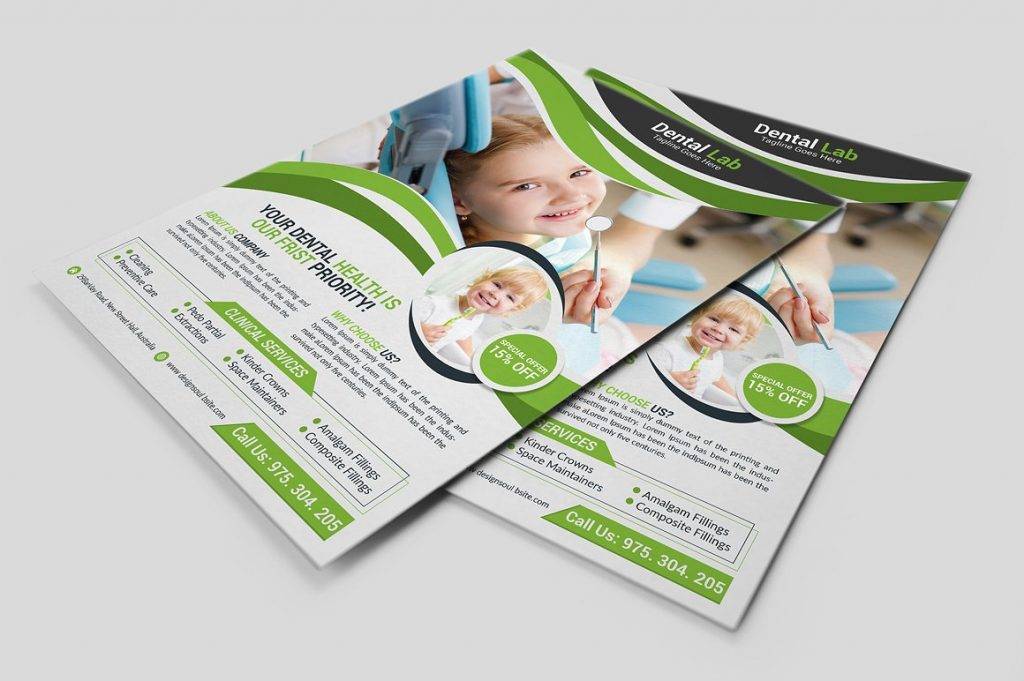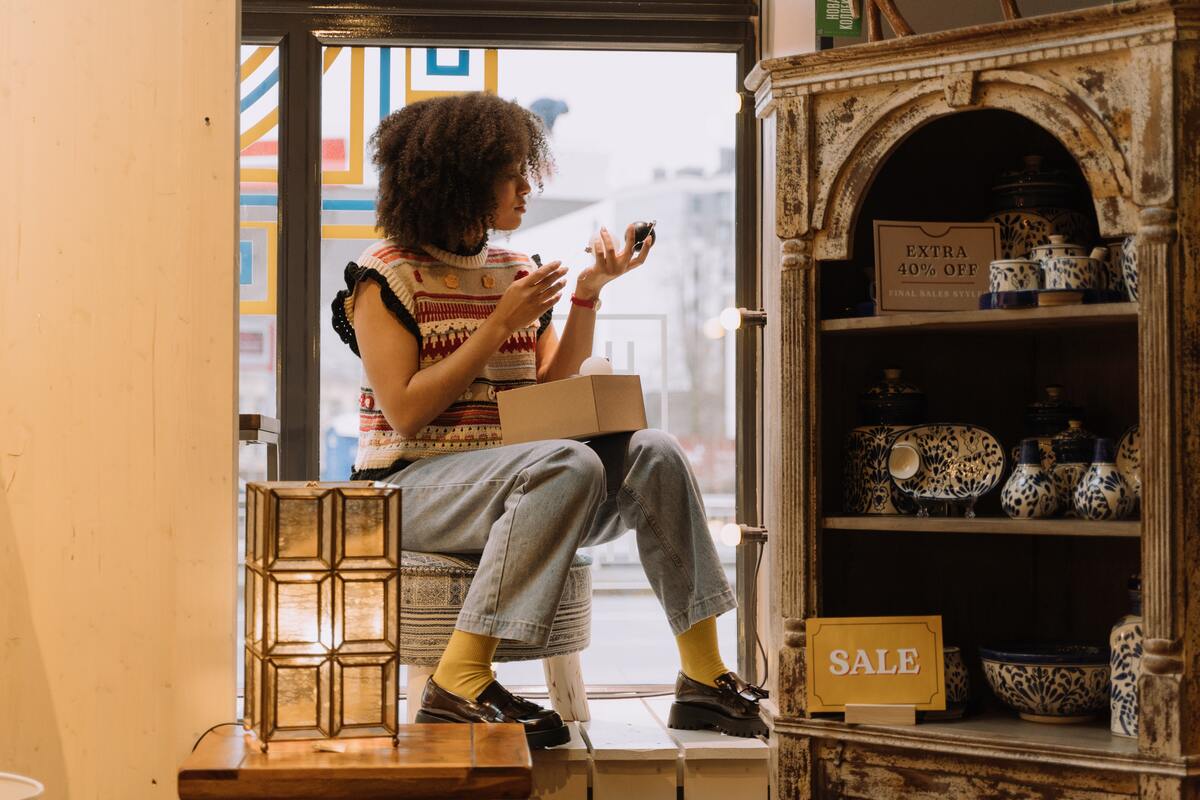As a dental office, you know the importance of marketing to bring in new patients and retain existing ones. However, with so many marketing options available, it can be challenging to decide which ones will be most effective and efficient for your practice. Flyer printing is an excellent option for dental offices as it is cost-effective, customizable, and has a high return on investment. In this blog post, we will discuss the importance of flyer printing for dental offices and how it can benefit your practice. Flyer printing is a cost-effective marketing strategy for dental offices. Compared to other marketing options, such as television and radio ads or online advertising, flyers are a much more affordable choice. The cost of flyer printing will depend on factors such as the design, size, quantity, and paper quality. However, even with these variables, flyers are still one of the most cost-effective marketing methods available. Another advantage of flyer printing is that it is completely customizable. You can choose to create flyers that are specific to your dental practice’s needs and target audience. The design, colors, and content of your flyer can be tailored to your brand and what you want to promote. Customization allows you to create a more personalized marketing message that will help you stand out from your competitors. High Return on Investment: One of the reasons flyers are an effective marketing strategy is that they have a high return on investment (ROI). The ROI of a flyer campaign will depend on various factors, such as the design, quality, and distribution strategy. However, because flyers are so affordable and customizable, the ROI is typically high. When you distribute flyers in high-traffic areas or mail them to targeted households, you can reach potential patients who may not have previously known about your practice. Versatile Use: Flyers can be used for many different marketing purposes. Whether you want to promote a new service, announce a special offer, advertise an event, or simply increase brand awareness, flyers can do it all. They can be distributed in a variety of ways, such as mailing them to prospective patients, handing them out at local events or public places, or including them in your office’s waiting room. Increased Visibility: Finally, flyer printing can significantly increase the visibility of your dental office. When you distribute flyers in high-traffic areas and target neighborhoods, you are exposing your practice to potential patients who may otherwise not have noticed your existence. As more people become aware of your dental office through flyers, you will build relationships with new patients, retain existing ones, and ultimately grow your practice. The wonders of DIY (Do It Yourself) printing have been growing in momentum. As technology becomes more accessible and software tools evolve, the realm of personal printing has expanded significantly. From artists to entrepreneurs, the need to understand and harness the power of DIY printing is evident. Let’s delve deeper into the world of DIY printing, ensuring you are equipped with the knowledge to kick-start your projects. 1. Why Choose DIY Printing? 2. Essential Tools for DIY Printing 3. Printing Techniques for Beginners 4. Overcoming Common DIY Printing Challenges 5. Environmental Considerations FAQs About DIY Printing Q: Is a laser printer better than an inkjet for DIY projects? A: The answer is project-specific. Laser printers excel in speed and crispness, perfect for text-heavy projects. However, inkjets, especially high-end models, can reproduce colors and gradients more faithfully. Q: How can I ensure the longevity of my prints? A: Apart from using quality inks, consider the post-printing process. UV protective sprays, lamination, or simply framing behind UV-resistant glass can greatly extend the life of your prints. Q: Why are my printed colors different from my screen? A: Screens are backlit and utilize the RGB color spectrum, while printers use CMYK. This fundamental difference can lead to variations. Always design in CMYK mode when your end goal is printing. Q: Can I print on materials other than paper? A: Absolutely! Modern printers can handle canvas, vinyl, certain fabrics, and even materials like thin wood or metal. Always ensure your printer supports the medium you’re experimenting with. Q: How often should I clean and maintain my printer? A: For frequent users, monthly checks are recommended. For sporadic users, a quarterly deep clean and regular dusting should suffice. Conclusion DIY printing is not just a process; it’s an art. It blends technical know-how with creative flair. Whether you’re reproducing a masterpiece, printing a novel, or simply ensuring your business cards reflect the professional you are, DIY printing empowers you to take control. As with all arts, there’s a learning curve, but with patience and practice, the world of printing is your canvas. Travel And Tourism- printing continues to hold a special place in captivating and inspiring audiences like no other medium can. Whether it’s glossy brochures enticing wanderlust, vibrant travel guides unveiling hidden gems, or stunning photographs capturing the essence of a destination, print materials have the power to transport individuals to far-flung places and awaken their sense of adventure. In this era of fleeting online content, where attention spans are increasingly limited, the tangible nature of printed materials offers a unique opportunity to engage with travelers on a deeper level. The weight of a well-designed travel magazine in hand, the texture of a beautifully crafted postcard, or the thrill of unfolding a detailed map all contribute to an immersive experience that stimulates curiosity and fuels the desire to explore. By combining compelling visuals, persuasive narratives, and practical information, printed materials provide a holistic representation of a travel destination, leaving a lasting impression on potential visitors. They serve as tangible souvenirs, encouraging individuals to cherish their travel memories long after their journeys have ended. We will uncover the various ways in which print materials can inspire and captivate audiences, from enticing vacation brochures and travel guides to innovative printing techniques that evoke a sense of wonder. Join us on this journey as we discover the enduring power of print in the realm of travel and tourism, and unlock the secrets to inspiring your audience through the tactile allure of beautifully printed materials. Print media, such as brochures, posters, and maps should correspond with effective promotional objectives: convenience, destination choice, and satisfaction. The information about the destination, which is required by tourists, is also an important means of promotion for the tourism industry. Print media in tourism refers to the use of traditional printed materials as a means of communication and promotion within the travel and tourism industry. It encompasses a wide range of physical materials, such as brochures, flyers, maps, guidebooks, magazines, and newspapers, that are specifically designed to inform, engage, and inspire travelers. Print media has long been a staple in the tourism industry, providing tangible resources that allow tourists to plan their trips, discover new destinations, and make informed decisions. One of the primary purposes of print media in tourism is to showcase the unique features and attractions of a particular destination. Travel brochures, for example, offer a visually appealing snapshot of a location, highlighting its natural landscapes, cultural heritage, historical sites, and recreational activities. These materials serve as persuasive tools, enticing potential travelers with vivid imagery and captivating descriptions. They create a sense of anticipation and excitement, igniting the desire to explore new places. Print media also plays a crucial role in providing practical information and guidance to travelers. Maps, guidebooks, and city directories are invaluable resources that offer navigation assistance, essential tips, and recommendations for accommodations, dining options, and local services. They provide a tangible reference that travelers can carry with them, ensuring easy access to important information even in areas with limited internet connectivity. Moreover, print media offers a sense of reliability and trustworthiness, as tourists can physically hold and refer to these materials at their convenience. Print media is one of the best ways to get information out to people. When someone receives a flyer, for example, they are able to read the information at their own pace and as many times as they wish. They can keep the flyer to consult later at their own leisure. The importance of printing cannot be overstated in today’s digital age. Printing plays a vital role in various aspects of our lives, from personal to professional, and from education to communication. One of the primary reasons for its importance is the tangibility and permanence it offers. Unlike digital content that can be easily lost or deleted, printed materials provide a physical presence that can be held, stored, and referenced at any time. This quality is especially valuable in fields such as education, where textbooks and printed resources serve as reliable references for students and educators alike. Printing also enables widespread dissemination of information. Whether it’s newspapers, magazines, brochures, or flyers, printed materials have the ability to reach a broad audience across different demographics and geographic locations. They provide a means of communication that doesn’t require access to the internet or electronic devices, making them inclusive and accessible to a wider population. Additionally, printed materials can be distributed in various public spaces, increasing their visibility and reach. Professionally designed and printed materials convey a sense of legitimacy and reliability. When information is presented in a polished and well-organized manner, it enhances the perceived value and trustworthiness of the content. For businesses, printed materials such as business cards, brochures, and catalogs act as tangible representations of their brand and offerings, leaving a lasting impression on potential customers. Tourism offers great opportunities for emerging economies and developing countries. It creates jobs, strengthens the local economy, contributes to local infrastructure development and can help to conserve the natural environment and cultural assets and traditions, and to reduce poverty and inequality. Tourism brings with it a multitude of benefits that have a significant impact on individuals, communities, and economies worldwide. One of the primary advantages of tourism is its contribution to economic growth. It stimulates local businesses and industries, creating job opportunities and generating revenue. Tourism expenditures support a wide range of sectors, including transportation, hospitality, food services, entertainment, and retail, thus boosting economic development and improving the standard of living for residents in tourist destinations. As travelers explore different regions and interact with local communities, they gain insights into diverse cultures, traditions, and ways of life. This exchange of knowledge and experiences promotes tolerance, appreciation, and respect for different cultures, ultimately fostering global harmony and unity. Tourism also plays a pivotal role in preserving and conserving natural and cultural heritage. Many tourist destinations rely on their unique attractions, such as national parks, historical sites, and cultural landmarks, to attract visitors. Consequently, the need to protect and preserve these resources becomes paramount. Tourism revenue often supports conservation efforts, ensuring the sustainability of natural and cultural treasures for future generations. Print media, such as brochures, posters, and maps should correspond with effective promotional objectives: convenience, destination choice, and satisfaction. The information about the destination, which is required by tourists, is also an important means of promotion for the tourism industry. Printed media plays a significant role in the field of tourism, providing a tangible and informative medium to promote destinations, attractions, and services. Several types of printed media are utilized within the tourism industry to capture the attention of travelers and assist them in planning their journeys. One of the most prevalent forms is brochures, which are compact, visually appealing pamphlets containing vivid descriptions, maps, and photographs of destinations, accommodations, and activities. Brochures serve as a handy guide that travelers can easily carry and consult while exploring new places. Another widely used printed medium is travel magazines, which offer in-depth articles, features, and recommendations on various destinations worldwide. These publications often include stunning imagery, insider tips, and inspiring stories, attracting potential tourists and igniting their wanderlust. Additionally, guidebooks have been a staple in tourism for decades, serving as comprehensive references that provide detailed information about a particular location’s history, culture, attractions, and practicalities such as transportation, accommodation, and dining options. Guidebooks cater to different interests and budgets, enabling travelers to tailor their experiences accordingly. Posters and flyers also hold value in tourism promotion, as they can be displayed in travel agencies, airports, hotels, and visitor centers to grab attention and inform passersby about upcoming events, tours, and special offers. Furthermore, newspapers and travel supplements in newspapers offer a platform for destination-specific articles, travel features, and advertisements, reaching a wide audience and generating interest in different travel experiences. They are described as the collection of media , such as brochures, leaflets, posters , flyers , postcards and websites, used to support the sales of tourism products. These materials, like any advertising materials, can be obtained free of charge. Tourism marketing utilizes a variety of materials to effectively promote destinations, attractions, and services to potential travelers. These materials are designed to capture attention, inspire wanderlust, and provide essential information to prospective tourists. Some common materials used in tourism marketing include brochures, flyers, posters, guidebooks, maps, websites, social media content, videos, photographs, and promotional merchandise. Brochures and flyers are popular printed materials that provide a snapshot of a destination’s highlights, attractions, accommodations, and activities. They are visually appealing and often include captivating images, enticing descriptions, and contact information for further inquiries. Posters serve a similar purpose, but on a larger scale, grabbing attention in high-traffic areas and conveying key messages in a concise and eye-catching manner. Guidebooks play a crucial role in providing comprehensive information about a destination. They include detailed descriptions of attractions, suggested itineraries, practical tips, and local insights. Guidebooks offer a tangible resource that travelers can carry with them, providing reliable information even without internet access. Maps are essential tools for tourists, offering visual representation and navigation assistance. They provide an overview of a destination’s layout, highlighting key landmarks, attractions, and points of interest. Maps can be distributed in various formats, including print and digital, ensuring easy accessibility for travelers. Printed travel literature plays a significant role in inspiring wanderlust by transporting readers to new destinations, capturing their imagination, and igniting a sense of adventure. Travel books, magazines, and guides provide a tangible and immersive experience that digital content often fails to replicate. Through vivid descriptions, captivating narratives, and stunning visuals, printed travel literature paints a rich and enticing picture of different places, cultures, and experiences. One of the primary roles of printed travel literature is to evoke a sense of curiosity and fascination. By delving into the pages of a travel book or flipping through the glossy images of a magazine, readers are transported to distant lands, exotic locales, and hidden gems they may have never considered before. The detailed accounts of unique landscapes, vibrant cities, and diverse cultures awaken a desire to explore and experience the world beyond their own familiar surroundings. By presenting these details in a storytelling format, travel literature goes beyond mere facts and figures, creating a more immersive experience that connects readers on an emotional level. This deeper understanding and appreciation of a destination’s cultural richness and significance enhance the allure and desire to visit. Travel memoirs, essays, and narratives allow readers to follow in the footsteps of adventurers, explorers, and travel enthusiasts who have ventured into the unknown. These personal accounts capture the spirit of discovery, offering insights into the joys, challenges, and transformative power of travel. They instill a sense of possibility and inspire readers to embark on their own journeys, seeking similar transformative experiences and moments of self-discovery. Print media has a significant role in creating memorable travel itineraries by providing valuable information, inspiring exploration, and offering a tangible reference during the trip. Travel guidebooks, brochures, and maps are key print media that contribute to crafting unforgettable travel experiences. Travel guidebooks are comprehensive resources that provide detailed information about destinations, attractions, accommodations, dining options, transportation, and local customs. They help travelers plan their itineraries by offering suggested routes, highlighting must-see sights, and providing insider tips. Guidebooks act as trusted companions, enabling travelers to make informed decisions and optimize their time, ensuring they don’t miss out on any hidden gems or unique experiences. Brochures play a crucial role in showcasing the diverse array of activities, attractions, and services available at a destination. They provide visually appealing snapshots of key highlights, helping travelers prioritize their interests and tailor their itineraries accordingly. From outdoor adventures to cultural events and culinary experiences, brochures offer a glimpse into the myriad of options, making it easier for travelers to curate a personalized and memorable travel plan. Printed maps, whether city maps or regional maps, are invaluable tools for navigating and exploring a destination. They help travelers familiarize themselves with the layout, identify key landmarks, and plan efficient routes. Maps offer a tangible reference that can be carried conveniently during the trip, eliminating the reliance on internet connectivity or digital devices. Using printed maps offers several key advantages for tourists, enhancing their navigation, orientation, and overall travel experience. One of the primary advantages is the reliability and accessibility of printed maps. Unlike digital maps that may depend on internet connectivity or battery life, printed maps are readily available and can be used anytime and anywhere. They eliminate the need for electronic devices, ensuring that tourists can navigate even in remote areas or locations with limited technology infrastructure. Printed maps also provide a holistic view of a destination’s layout and geography. They offer a tangible representation of the surrounding area, allowing tourists to understand the relationship between different landmarks, streets, and neighborhoods. This comprehensive overview enables better spatial orientation and helps tourists plan efficient routes and itineraries. By physically engaging with a map, tourists actively participate in the navigation process, tracing routes, and identifying points of interest. This tactile experience enhances the connection with the destination, empowering tourists to make informed decisions and independently explore their surroundings. It allows for serendipitous discoveries and encourages a more immersive and memorable travel experience. The art of printing continues to hold immense value in the realm of travel and tourism. While digital platforms have revolutionized the way we access information, print materials possess a unique ability to captivate and inspire audiences in ways that digital content cannot replicate. The tangible nature of printed materials creates a sensory experience that immerses travelers and sparks their wanderlust. From glossy brochures and travel guides to postcards and maps, print materials serve as powerful tools for destination marketing. They bridge the gap between the virtual and physical worlds, providing a tangible representation of a travel experience and leaving a lasting impression on potential visitors. Print materials also serve as cherished souvenirs, preserving travel memories and evoking nostalgia long after the journey has ended. In a world inundated with digital information, print materials offer a refreshing and engaging alternative. They provide a tangible and immersive experience that stimulates curiosity, ignites the imagination, and ultimately inspires individuals to explore the world. So, embrace the enduring power of print in travel and tourism, and let it be your guide in inspiring your audience to embark on unforgettable journeys. Spot Uv- Whether it be business cards, brochures, packaging, or promotional materials, the design and finish play a pivotal role in capturing and holding the viewer’s gaze. Amidst various printing techniques and finishes, two distinct approaches have emerged as game-changers in the industry: Spot UV and glossy finishes. These techniques wield a remarkable power to transform ordinary prints into visually stunning masterpieces, creating an impact that is both tactile and visually captivating. Spot UV printing is a process that utilizes ultraviolet light to cure a clear varnish in specific areas, creating a striking contrast between the glossy and matte elements of a design. This targeted application of the glossy finish adds depth, dimension, and a tactile appeal to printed materials. By selectively enhancing certain areas, spot UV highlights logos, text, images, or intricate details, creating a visually dynamic experience that draws the viewer’s attention and instills a sense of luxury and quality. Complementing the allure of spot UV, glossy finishes provide a smooth, reflective coating that enhances the vibrancy and richness of colors. This finish adds a lustrous sheen to the printed surface, creating an eye-catching effect that exudes professionalism and sophistication. Glossy finishes can be applied to the entire surface or specific elements, adding depth and allure to photographs, illustrations, or graphics. The reflective nature of the finish adds a tactile quality, enticing the viewer to engage with the printed piece and explore its intricacies. What is Spot UV? UV coating, in general, is a type of finish or digital embellishment that uses polymer resin and ultraviolet light to add a glossy, protective layer to print materials. The coating hardens and dries when exposed to ultraviolet radiation to create a hard and shiny finish. The spot UV effect in printing is a technique that involves the application of a clear varnish in specific areas of a printed material, creating a glossy and raised effect on those chosen spots. UV, or ultraviolet, light is used to cure the varnish, resulting in a smooth and shiny finish. This process offers a striking contrast between the glossy and matte elements of a design, adding depth and dimension to the printed piece. By selectively enhancing certain areas, spot UV highlights logos, text, images, or intricate details, creating a visually dynamic experience that draws the viewer’s attention. The raised and reflective nature of spot UV gives a tactile quality to the printed material, enticing the viewer to explore and interact with it. Spot UV printing can be employed in various ways to achieve different effects. It can be used to create subtle accents or to make specific elements stand out, such as adding a glossy finish to a logo or highlighting important text. The technique can also be utilized to create a contrast between different textures, making certain areas appear smooth and shiny while leaving others with a matte finish. This versatility allows designers to play with visual interest and create a sense of depth within the printed piece. The spot UV effect is particularly effective in adding a touch of sophistication and luxury to printed materials. Whether it is used on business cards, brochures, packaging, or promotional materials, spot UV enhances the overall perceived value and quality of the product or brand. The glossy and raised areas catch the light and create an eye-catching effect, capturing the viewer’s attention and making a memorable impression. Super Gloss and Spot UV are coatings that leave a glossy finish. The main difference is the application – Super Gloss is applied as a flood, which is throughout the entire surface, and Spot UV is applied to specific areas only. This technique adds depth, dimension, and a tactile appeal to the design, drawing attention to logos, text, images, or intricate details. On the other hand, gloss finishing involves coating the entire surface or specific elements of a printed material with a smooth, reflective finish. It adds a lustrous sheen to the surface, enhancing the richness and vibrancy of colors and creating a visually striking effect. The key difference between spot UV and gloss lies in their application and coverage. Spot UV is applied selectively to specific areas, creating a contrast between glossy and matte elements, while gloss finish can be applied more broadly, either to the entire surface or targeted sections. Spot UV is ideal for highlighting specific details or creating visual emphasis on key elements, making them pop and stand out. It adds a tactile dimension to the design, inviting viewers to engage with the printed material. On the other hand, gloss finish provides an overall glossy coating that enhances the overall visual impact and professionalism of the printed piece. It creates a sleek and polished appearance, making colors appear more vibrant and giving a luxurious feel to the design. Both spot UV and gloss finishes have their unique advantages and can be used in combination to achieve even more visually stunning effects. Designers can leverage these techniques to create captivating printed materials that leave a lasting impression on viewers. Whether it’s a business card, brochure, packaging, or promotional material, the choice between spot UV and gloss will depend on the desired visual impact, the specific elements to be emphasized, and the overall aesthetic goals of the design. Our regular Spot UV is a flat finish, a shiny gloss layer that is applied where you’re seeking an area of high gloss coating. Raised Spot UV coating uses a similar process, except the applied UV is high off the card. You can feel it when you run your fingers over it. It creates a contrast between the glossy and matte surfaces, making the treated areas stand out. Spot gloss adds a sleek and sophisticated look to the design, highlighting certain elements such as logos, text, or images. This technique is achieved by applying the gloss coating in a flat layer, resulting in a smooth and seamless finish. On the other hand, raised spot gloss, also known as raised UV or embossed spot gloss, offers an additional tactile dimension to the printed material. It involves applying a glossy varnish or coating to specific areas and then raising those areas to create a textured or raised effect. This technique provides a three-dimensional appearance, with the treated areas having a slightly elevated surface compared to the rest of the design. The key difference between spot gloss and raised spot gloss lies in the level of texture and dimensionality. Spot gloss creates a visual contrast between glossy and matte surfaces without any physical elevation, while raised spot gloss adds a tactile element by raising the treated areas. Both techniques have their unique applications and can be used independently or in combination to achieve different design effects. The choice between spot gloss and raised spot gloss depends on the desired aesthetic and the level of visual and tactile impact the designer wishes to create. UV coating, or ultraviolet coating, is a very glossy, shiny liquid coating applied to a printed paper surface and cured on a printing press or special machine using ultraviolet light. The coating hardens, or cures when it is exposed to the ultra violet radiation. UV gloss printing refers to a specialized printing technique that involves the application of a glossy and protective coating to a printed surface using ultraviolet (UV) light. This process creates a smooth and shiny finish that enhances the visual appeal of printed materials. UV gloss printing offers several advantages that make it a popular choice in the printing industry. One of the primary benefits of UV gloss printing is its ability to enhance the richness and vibrancy of colors. The glossy coating reflects light, giving the printed piece a lustrous sheen and intensifying the colors, making them appear more vibrant and eye-catching. This effect adds a sense of professionalism and sophistication to the design, elevating its overall visual impact. Another advantage of UV gloss printing is its durability and resistance. The UV curing process creates a hard and protective layer on the printed surface, making it more resistant to scratches, abrasion, and fading caused by exposure to sunlight or moisture. This durability ensures that the printed materials maintain their quality and longevity, making them suitable for applications that require long-term use, such as business cards, brochures, or product packaging. UV gloss printing is also known for its quick drying time. As the UV inks are instantly cured using UV light, there is no need for additional drying time or waiting for the ink to set. This allows for faster production and turnaround times, making it an ideal choice for projects with tight deadlines. UV digital printing speeds up the print production process by instantly curing specially formulated UV inks on a vast range of materials using UV lamps. Piezo print heads eject ink with precision onto the print media. This technology gives you control over the print quality, colour density and finish. The purpose of UV printing is to achieve high-quality, vibrant, and durable prints with exceptional detail and visual impact. UV printing utilizes ultraviolet (UV) light to instantly cure UV inks, resulting in sharp, vibrant colors and precise image reproduction. The primary purpose of UV printing is to enhance the overall quality and appearance of printed materials, making them stand out and leave a lasting impression on viewers. The UV curing process prevents ink absorption into the printing substrate, resulting in higher color saturation and sharper image reproduction. This allows for the creation of visually stunning prints that accurately represent the intended colors and details of the design. Another important purpose of UV printing is to ensure durability and resistance. The UV curing process creates a protective layer on the printed surface, making it more resistant to scratches, abrasion, and fading caused by exposure to sunlight or moisture. This enhances the longevity and durability of the printed materials, making them suitable for various applications that require long-term use, such as signage, outdoor displays, and product labels. Spot UV and glossy finishes can be applied to a wide range of printed materials, but the suitability may vary depending on the specific characteristics and requirements of each material. In general, spot UV can be applied to most paper-based materials, including business cards, brochures, book covers, postcards, and packaging. The key consideration is the porosity of the material. Spot UV works best on smooth, non-absorbent surfaces, as it requires a clear varnish to sit on top of the material rather than being absorbed into it. Therefore, materials with a coated or laminated surface tend to yield the best results for spot UV applications. Similarly, glossy finishes can also be applied to various printed materials. The glossy coating adds a smooth, reflective layer that enhances colors and provides a lustrous sheen to the surface. This finish is compatible with paper, cardboard, and some plastics. However, it is important to note that the material should have a suitable texture and surface quality to ensure proper adhesion and achieve the desired glossy effect. Coated papers or materials with a smooth surface are typically more compatible with glossy finishes, allowing for a uniform and visually appealing result. While spot UV and glossy finishes can be applied to a wide range of printed materials, it is recommended to consult with printing professionals to determine the best approach for each specific material and design. They can provide guidance on the compatibility of the finishes with the chosen material, suggest any necessary adjustments or preparations, and ensure that the desired visual effects are achieved successfully. Spot UV and glossy finishes play a significant role in enhancing the overall aesthetic of a design by adding visual interest, depth, and a sense of sophistication. Spot UV is particularly effective in drawing attention to specific elements of a design. By selectively applying a glossy varnish to chosen areas, such as logos, text, or images, spot UV creates a striking contrast between glossy and matte surfaces. This contrast adds depth and dimension to the design, making those elements stand out and capturing the viewer’s attention. The tactile quality of spot UV further engages the viewer, as they are enticed to explore and interact with the printed piece. The smooth and reflective coating enhances the richness and vibrancy of colors, making them appear more vibrant and captivating. Gloss finishes add a lustrous sheen to the surface, providing a high-quality and professional look. This can elevate the perceived value of the design and enhance the overall impression of the printed material. Glossy finishes are particularly effective in product packaging, as they can create an alluring and eye-catching appearance that entices consumers. They add a touch of sophistication and enhance the perceived quality of the printed materials, making them stand out in a crowded market. These finishing techniques allow designers to play with textures, create focal points, and add depth to their designs, ultimately elevating the overall aesthetic and making a memorable impression on viewers. When incorporating spot UV and glossy finishes in artwork, there are several important considerations and guidelines to ensure optimal results. First and foremost, it is crucial to work closely with printing professionals who have experience with these techniques. They can provide valuable insights and guidance throughout the design process, ensuring compatibility between the artwork and the desired finishes. One consideration is the design itself. Not all designs are suitable for spot UV and glossy finishes. Intricate or small details may not work well with spot UV, as it requires a certain level of thickness to achieve the desired effect. Similarly, glossy finishes may not work as effectively on textured or highly porous materials, as the smoothness of the surface is essential for a uniform glossy appearance. Simplifying and optimizing the design for these finishes can help ensure better outcomes. Another consideration is the choice of materials. Spot UV works best on smooth and non-absorbent surfaces, such as coated papers or laminated materials. Testing the compatibility of the finishes with the chosen materials is recommended to avoid potential issues and ensure proper adhesion and visual impact. The power of spot UV and glossy finishes in printing cannot be understated. These techniques have the ability to transform ordinary printed materials into captivating visual experiences that leave a lasting impact on viewers. Spot UV printing, with its targeted application of glossy varnish, adds depth and dimension to designs, creating a tactile appeal that draws attention and conveys a sense of luxury. On the other hand, glossy finishes contribute a smooth, reflective coating that enhances colors, adding a lustrous sheen that exudes professionalism and sophistication. The combination of spot UV and glossy finishes opens up endless creative possibilities for designers and marketers. By selectively enhancing specific elements or employing them throughout the entire surface, brands can elevate their visual identity and create a memorable impression on their target audience. These techniques are particularly effective in packaging design, where they can instantly captivate consumers and communicate the quality and value of the product inside. Retail Market- Printing plays a crucial role in the retail market, enabling businesses to communicate their brand, product information, and promotional offers to customers effectively. From signage and labels to packaging and advertising materials, the retail industry heavily relies on high-quality printing to capture consumer attention and drive sales. However, the Printing landscape of printing for the retail market presents a distinct set of challenges and opportunities that businesses must navigate to thrive in today’s competitive environment. One of the unique challenges in printing for the retail market is the need for customization and personalization. Retailers often require printing solutions that can accommodate variable data, such as pricing, product descriptions, and barcodes, to cater to a diverse range of products. Furthermore, the demand for personalized marketing materials, such as direct mailers and catalogs, has been on the rise as businesses seek to engage customers on an individual level. Meeting these customization requirements while maintaining efficiency and cost-effectiveness poses a significant challenge for print service providers. The retail market operates at a fast pace, characterized by ever-changing trends and seasonal promotions. This dynamic environment necessitates quick turnaround times for printing orders, as retailers must respond swiftly to market demands and consumer preferences. Printers must be equipped with agile production processes and streamlined workflows to meet tight deadlines without compromising quality. The major challenges of printing industry are digitization trends, declining demands from industries like banking, advertising, postal services as digital channels have already taken over. Price pressures with declining demand and increasing asset costs also hit the margins of printing businesses. Print providers face a dynamic landscape of challenges and opportunities in today’s digital age. One of the primary challenges lies in the evolving nature of consumer behavior and preferences. With the rise of digital media and online platforms, the demand for traditional print materials has decreased. This shift requires print providers to adapt their business models to remain relevant. Additionally, technological advancements have led to the emergence of new printing methods and equipment, making it necessary for print providers to invest in the latest technology to stay competitive. Another significant challenge is sustainability and environmental concerns. The print industry has long been associated with high paper consumption and waste generation. In response, print providers must adopt eco-friendly practices and explore sustainable alternatives, such as using recycled paper and environmentally friendly inks. By addressing these concerns, they can appeal to environmentally conscious customers and tap into the growing market for sustainable print solutions. Print providers can leverage variable data printing and digital technology to offer personalized print products, such as customized packaging, direct mail, or promotional materials. This approach enables them to differentiate themselves from digital competitors and deliver targeted marketing solutions. Retail is one of the industries with the highest employee turnover rates. Therefore, retaining staff is one of the toughest challenges in the retail company. Meanwhile, replacing employees requires a lot of energy and costs. The solution to this challenge is to increase employee engagement within your company. The retail industry faces a multitude of challenges in today’s rapidly changing business environment. One of the primary challenges is the shift in consumer behavior and preferences. With the rise of e-commerce and online shopping, traditional brick-and-mortar retailers are experiencing a decline in foot traffic and sales. To stay competitive, retailers need to adapt to the digital era by embracing omnichannel strategies that seamlessly integrate online and offline shopping experiences. This entails investing in robust e-commerce platforms, optimizing mobile shopping experiences, and leveraging data analytics to understand customer preferences and provide personalized offerings. The market is saturated with numerous players, both online and offline, vying for consumer attention. Retailers need to differentiate themselves by offering unique value propositions, whether through innovative products, exceptional customer service, or exclusive experiences. Creating a strong brand identity and fostering customer loyalty are crucial to withstand the competition. Factors such as increasing rent, labor costs, and supply chain complexities put pressure on profit margins. Retailers must optimize their operations, streamline processes, and explore cost-saving measures to remain financially viable. This may involve leveraging technology solutions like inventory management systems, automated checkout processes, and efficient logistics networks. Marketing, innovation, customer loyalty, and monetization are key challenges. Learn about the seven ultimate challenges facing the printing industry in current scenarios. To be successful and count in the mainstream market, enterprises must be free from these challenges with cost-effective solutions. Printing companies face several significant challenges in the modern business landscape. One of the primary challenges is the digital shift and the decreasing demand for traditional print materials. As consumers increasingly rely on digital media and online platforms for information and communication, the need for printed materials such as newspapers, magazines, and brochures has diminished. This shift requires printing companies to adapt their business models and explore new revenue streams, such as offering digital printing services, providing value-added services like graphic design or packaging, or diversifying into specialty printing niches. This competition puts pressure on pricing, profit margins, and customer acquisition. To stand out from the competition, printing companies need to differentiate themselves through exceptional print quality, quick turnaround times, superior customer service, and innovative solutions. Building strong relationships with clients and offering customized printing options can also help printing companies retain customers in a highly competitive environment. The print industry has historically been associated with high paper consumption, waste generation, and environmental impact. In response, printing companies need to adopt eco-friendly practices, such as using recycled paper, implementing energy-efficient processes, and investing in environmentally friendly inks and coatings. By embracing sustainability and promoting eco-conscious printing solutions, printing companies can appeal to environmentally conscious customers and align with changing consumer preferences. One of the main benefits of using 3D printing for retail design prototyping is that it can save you time and money. You can create multiple iterations of your design in a matter of hours or days, instead of weeks or months, and test them in real or simulated environments. 3D printing has emerged as a disruptive technology with a wide range of applications, including in the retail industry. One significant use of 3D printing in retail is in the realm of product prototyping and development. Retailers can leverage 3D printing to create rapid prototypes of new products, allowing them to visualize and test designs before committing to large-scale production. This enables faster iteration and refinement, reducing time-to-market and improving overall product quality. 3D printing enables customization and personalization in retail. Retailers can utilize this technology to offer unique and personalized products to their customers. Whether it’s customized jewelry, tailored clothing, or personalized home decor items, 3D printing allows for the production of individualized goods at a reasonable cost. Customers can have input in the design process, creating a more engaging and interactive shopping experience. Another area where 3D printing is making an impact is in the production of spare parts. Retailers can utilize 3D printing to manufacture spare parts on-demand, eliminating the need for large inventories and reducing lead times. This can be particularly beneficial for retailers dealing with rare or obsolete items. Customers can easily obtain the required spare parts, enhancing customer satisfaction and loyalty. The retail sector in India presents both opportunities and challenges for businesses operating in this space. Firstly, one of the significant opportunities lies in India’s large and growing consumer market. With a population of over 1.3 billion people, the country offers a vast customer base with diverse needs and preferences. This presents an opportunity for retailers to tap into various consumer segments and tailor their products and services accordingly. Additionally, the rising middle class and increasing disposable incomes have led to a surge in consumer spending, creating a favorable environment for retail businesses to expand and thrive. Another opportunity for retail businesses in India is the rapid growth of e-commerce. With the advent of affordable smartphones and widespread internet connectivity, online shopping has gained significant traction in the country. Retailers can leverage this trend by establishing an online presence, reaching customers beyond geographical limitations, and capitalizing on the convenience and accessibility of online platforms. Printing for retail involves several specific customization challenges that need to be addressed to meet the unique requirements of the industry. One significant challenge is the need for personalization and variation in print materials. Retailers often require customized labels, packaging, signage, and promotional materials to align with their branding and marketing strategies. Managing a large number of unique designs and ensuring consistent quality across different print runs can be a complex task. Another challenge is the demand for quick turnaround times. In the fast-paced retail environment, businesses need to respond rapidly to market trends, seasonal promotions, and product launches. This puts pressure on print providers to deliver high-quality customized materials within tight deadlines. Accurate color representation is vital for retail materials as it directly impacts brand recognition and customer perception. Achieving color consistency across different print technologies, substrates, and production runs requires careful calibration and monitoring. The e-commerce sector presents numerous opportunities for printing in retail, leveraging the digital landscape to enhance customer experiences and brand visibility. One significant opportunity is the demand for customized packaging. With the rise of online shopping, retailers are increasingly seeking ways to create memorable unboxing experiences for customers. Customized packaging allows brands to leave a lasting impression, build brand loyalty, and differentiate themselves from competitors. Printing providers can offer a range of solutions, such as printed boxes, inserts, tissue paper, and stickers, to help retailers achieve this. Another opportunity lies in personalized marketing materials. E-commerce platforms enable retailers to gather valuable customer data and preferences, which can be leveraged to create personalized print materials. From targeted direct mail campaigns to personalized catalogs and product brochures, customized print materials can enhance customer engagement and drive sales. Additionally, the e-commerce sector provides opportunities for print-on-demand services. As retailers increasingly adopt on-demand manufacturing and inventory management strategies, printing providers can offer efficient solutions for producing customized merchandise, such as apparel, accessories, and home decor items, in response to customer orders. This eliminates the need for large inventory storage and enables retailers to offer a wide range of options to their online customers. Retailers can use QR codes or image recognition to link print materials to digital content, providing immersive experiences and bridging the gap between online and offline channels. Digital printing technologies have sparked a revolution in the retail printing industry, bringing significant advancements and transformative changes. One key revolution is the ability to offer on-demand printing services. Traditional offset printing required large print runs, making it challenging for retailers to produce small quantities or personalized materials cost-effectively. Digital printing, on the other hand, allows for short print runs, quick turnaround times, and customization capabilities. This has empowered retailers to create targeted marketing materials, personalized packaging, and promotional items tailored to specific customer segments or events. Another revolution brought by digital printing is its flexibility and versatility. Retailers can now print on a wide range of substrates, including paper, cardboard, plastic, fabric, and even metal. This flexibility opens up opportunities for innovative and creative applications, such as printing on unique surfaces, creating textured effects, or producing custom-designed merchandise. Moreover, digital printing offers improved color accuracy and consistency. With advanced color management systems and precise calibration, retailers can ensure that their branding materials, such as logos, product images, and color schemes, are accurately represented in print. This enhances brand recognition, consistency, and customer trust. The need for customization and personalization presents a challenge for print service providers, who must efficiently handle variable data and meet diverse product requirements. Moreover, the fast-paced nature of the retail industry demands quick turnaround times to keep up with market demands and consumer preferences. The rise of e-commerce has increased the demand for packaging and shipping materials, providing a significant avenue for expansion. Additionally, digital printing technologies have transformed the landscape by enabling shorter print runs, on-demand printing, and cost-effective prototyping. This empowers retailers to experiment with new ideas and concepts before committing to large-scale production. To thrive in the retail printing market, businesses must embrace technological advancements, streamline workflows, and offer customized solutions. By understanding the unique challenges and capitalizing on the emerging opportunities, print service providers can position themselves as valuable partners in helping retailers effectively communicate their brand messages, engage customers, and ultimately drive sales. At Scottsdale Vintage Finds, we love all things vintage. That’s why we’re excited to share a brief history of vintage vases and planters with all of our valued customers. Whether you’re an avid collector or simply appreciate the beauty of these timeless pieces, we hope this blog post will give you a greater understanding and appreciation for vintage vases and planters. Vintage vases and planters have been around for centuries, with some of the earliest examples dating back to Ancient Egypt. These early vases were often made from materials like clay, stone, or wood, and were used for both functional and decorative purposes. In Ancient Greece, vases were often decorated with scenes from mythology or daily life, while in Ancient Rome, they were used primarily for storage or as grave markers. Throughout the centuries, vases and planters have been produced in a wide variety of materials, including glass, porcelain, metal, and even plastic. The styles of these pieces have also varied greatly, depending on the prevailing trends of the time. In the Victorian era, for example, elaborate floral designs were popular, while Art Deco vases often featured geometric patterns or sleek lines. No matter what the style or material, however, vintage vases and planters are always prized for their beauty and craftsmanship. At Scottsdale Vintage Finds, we carry a wide selection of vintage vases and planters from all different eras. Whether you’re looking for a statement piece for your home or a unique gift for a loved one, we’re sure to have something that will suit your needs. Browse our collection today, or contact us now, and find that perfect piece of history! Banners are an excellent way to get your business noticed. At Copyfast Printing, we can produce paper, cloth, and vinyl banners in a variety of sizes and styles to suit your needs. We also offer a wide range of mounting options so you can display your banner just about anywhere. Whether you’re looking for a simple design or something. Banner printing is a great way to get your business noticed. At Copyfast Printing, they can produce paper, cloth, and vinyl banners in a variety of sizes and styles to suit your needs. Our banners are high quality and can be customised to include your logo and contact information. Banners are a great way to grab attention and promote your business. They can be used indoors or outdoors, and are a great way to announce a sale or special event. Contact us today to discuss your banner printing needs. We know that most businesses have some kind of design already in place, so we’ll work with what you’ve got. But if not…we can start from scratch and create something entirely unique just for your company!The Importance of Flyer Printing for Dental Offices

Cost-EffectiveCustomizable
Flyer printing is a cost-effective, customizable, and versatile marketing tool that dental offices can use to attract more patients. With a high return on investment and increased visibility, flyers can significantly benefit dental practices looking to promote their brand. If you’re looking for a reliable and affordable marketing strategy to grow your dental practice, consider incorporating flyer printing into your marketing efforts.DIY Printing: A Comprehensive Guide to Getting Started
Printing For Travel And Tourism: Inspiring Your Audience
Introduction:
What is print media in tourism?

What is the importance of printing?
What are the benefits of tourism?
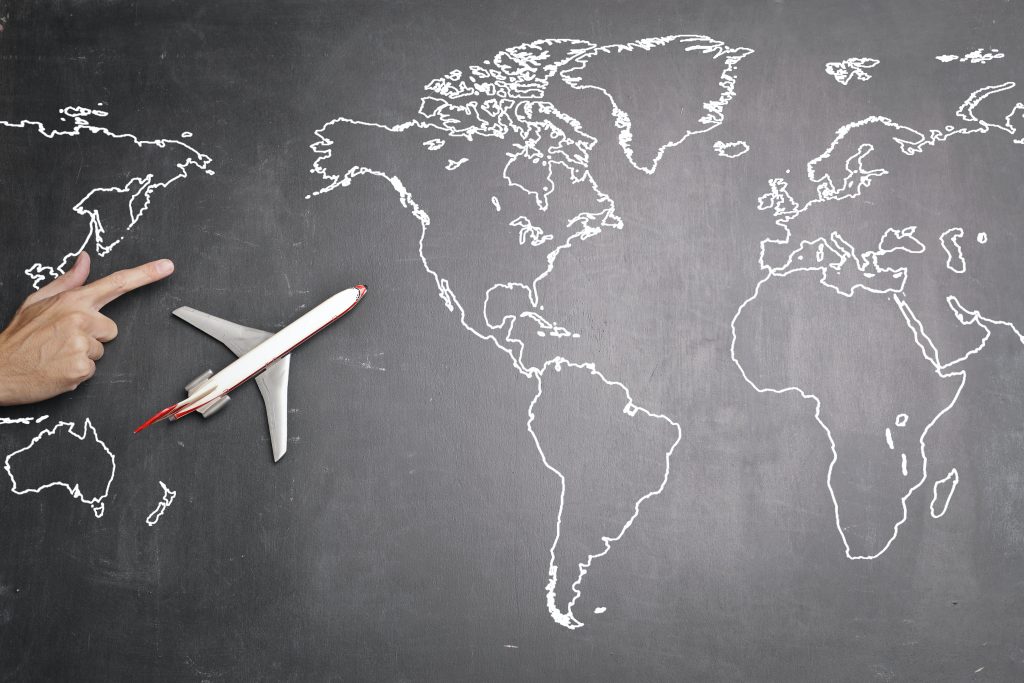
What are the printed media used in tourism?
What are the materials used in tourism marketing?

What role does printing for travel travel literature play in inspiring wanderlust?
How can print media contribute to creating memorable travel itineraries?
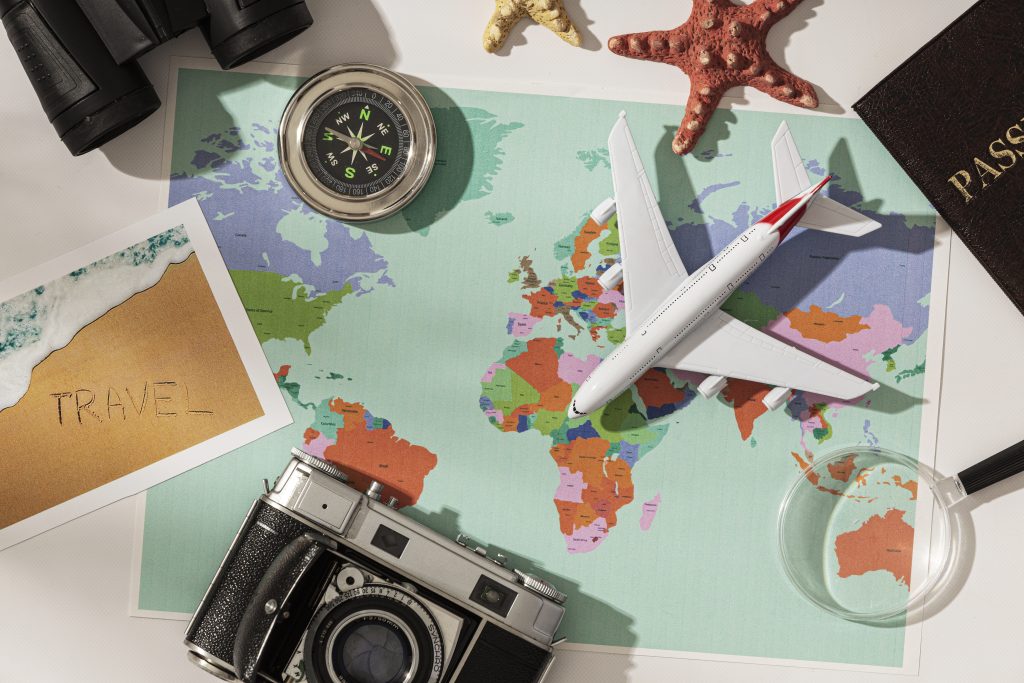
What are the key advantages of using printing for travel maps for tourists?
Conclusion:
The Power Of Spot Uv And Glossy Finishes In Printing
Introduction:
What is the spot UV effect in printing?
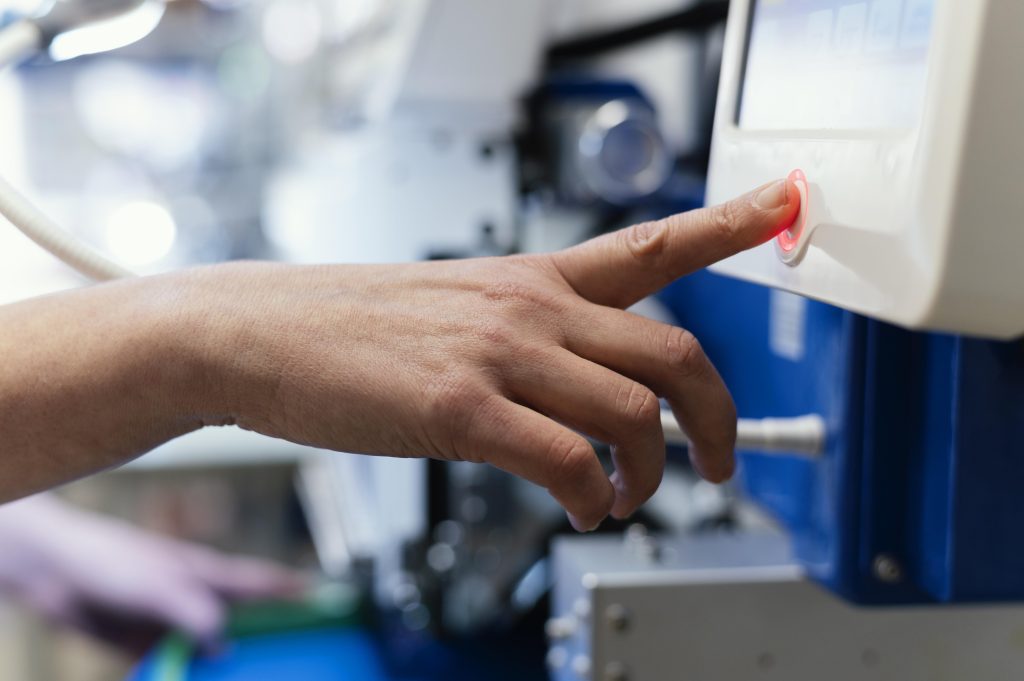
What is the difference between spot UV and gloss?
What is the difference between spot gloss and raised spot gloss?
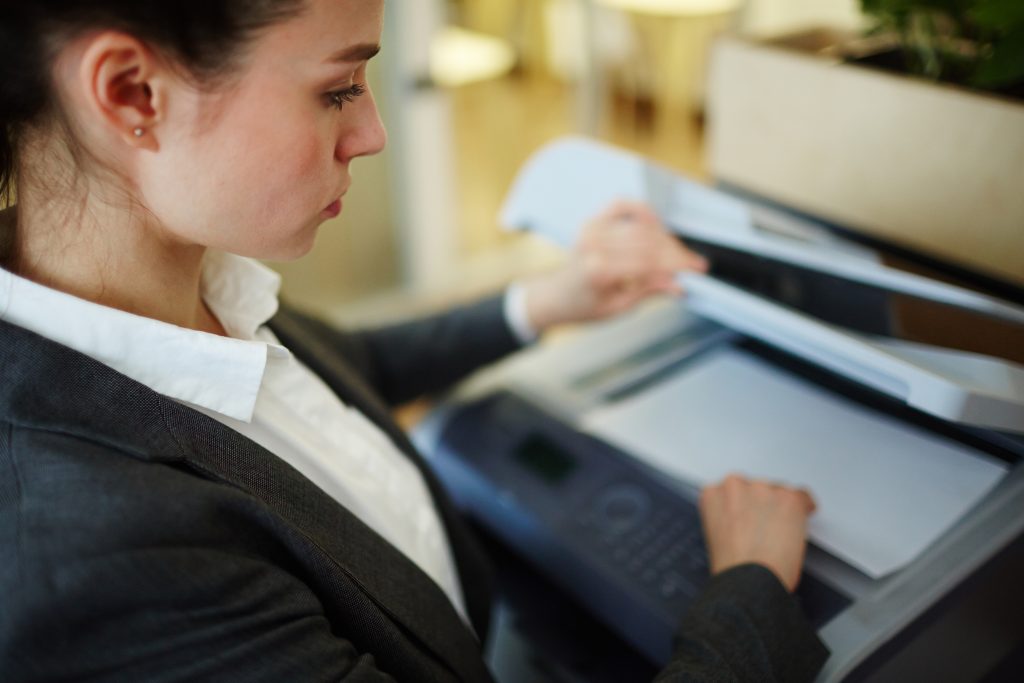
What is UV gloss printing?
What is the purpose of UV printing?
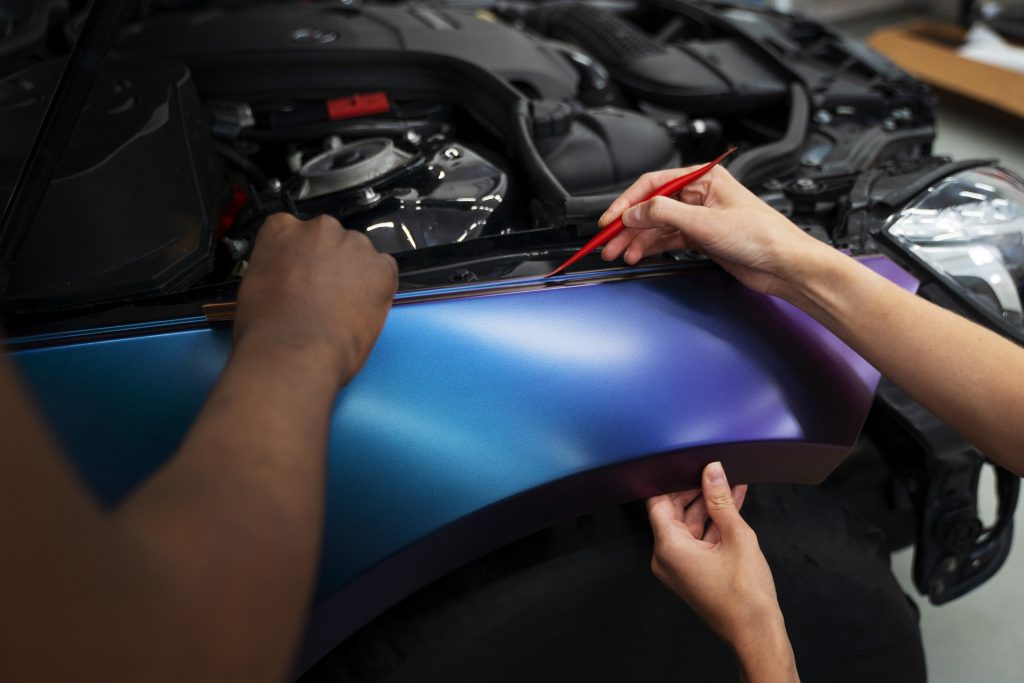
Can spot UV and glossy finishes be applied to any type of printed material?
How do spot UV and glossy finishes enhance the overall aesthetic of a design?
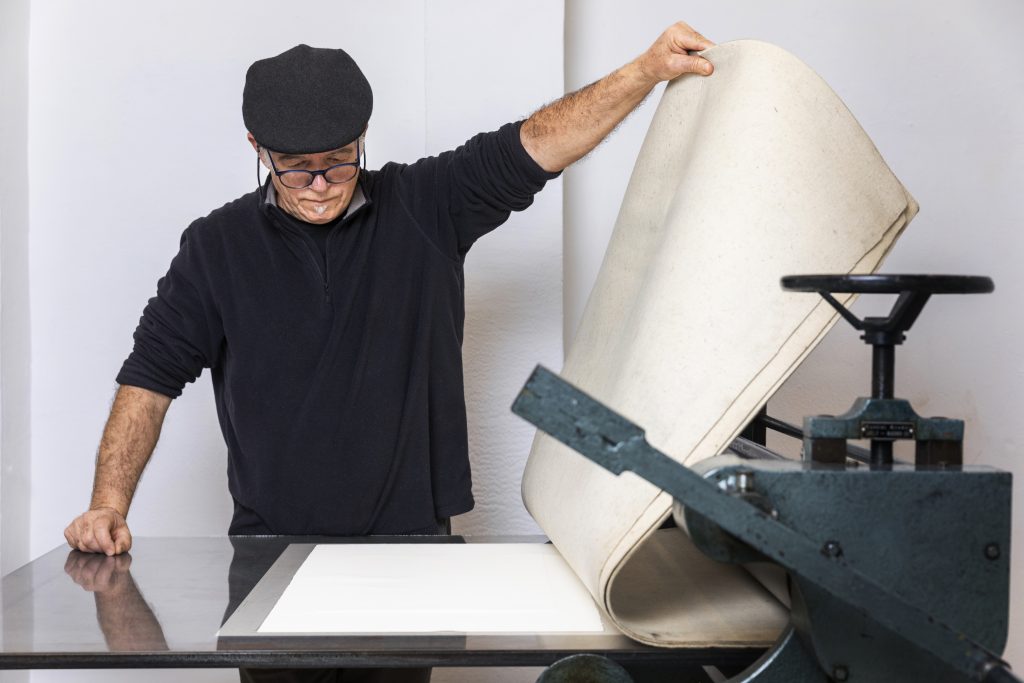
Are there any considerations or guidelines for incorporating spot UV and glossy finishes in artwork?
Conclusion:
Printing For The Retail Market: Unique Challenges And Opportunities
Introduction:
What are the challenges and opportunities for print providers?

What are the challenges faced by retail industry?
What are the biggest challenges from printing companies in the world?

How is 3D printing used in retail?
What are the opportunities and challenges for retail business in India?

What are the specific customization challenges in printing for retail?
What opportunities does the e-commerce sector present for printing in retail?
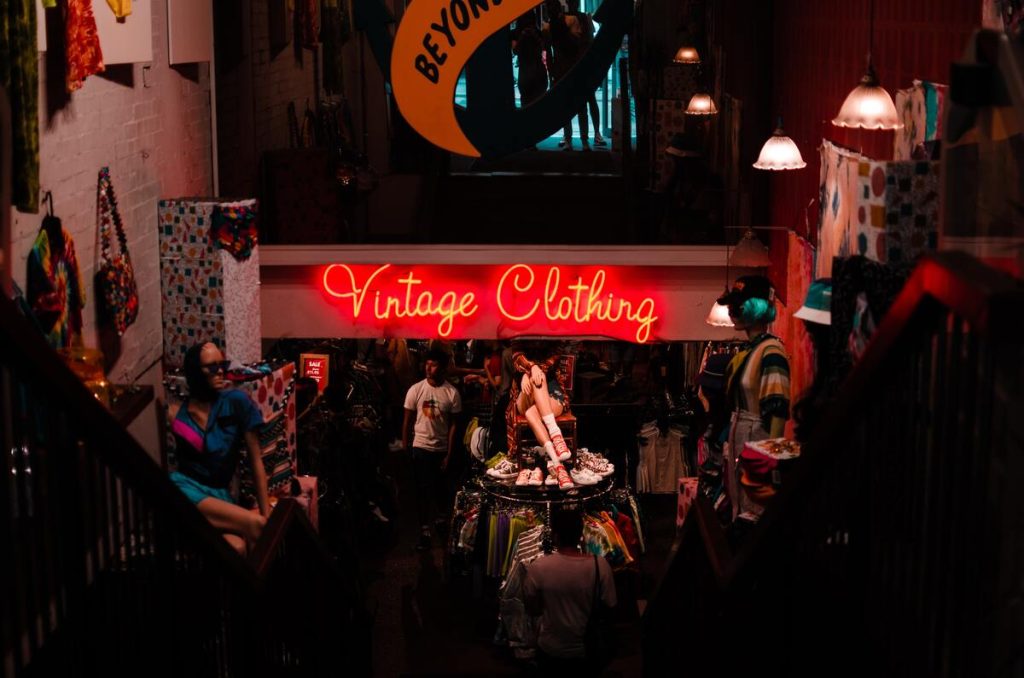
How have digital printing technologies revolutionised the retail printing industry?
Conclusion:
A Brief History Of Vintage Vases And Planters
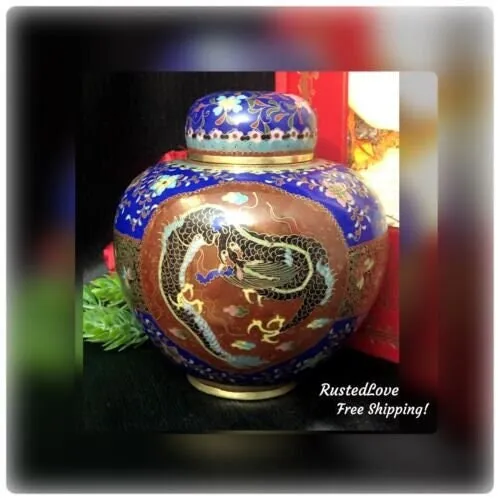
Full Color Printing For Any Banner Size!


